
If you didn’t manage to watch the Christmas Eve “Great History Quiz” then here it is from YouTube:
[Read More...]
If you didn’t manage to watch the Christmas Eve “Great History Quiz” then here it is from YouTube:
[Read More...]
With a giant 40 page special section, and over 80 pages in total, it’s only when you put together a magazine featuring Elizabeth I that you realize how many portraits of the queen there are, how many different “personalities” she showed, how clever a ruler she was, and how long her reign was
[Read More...]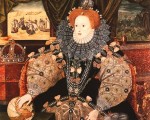
Fashion has had innumerable iterations throughout the centuries, with the Renaissance bringing about not just changes in thinking, art and education, but also clothing style. And along with new clothing styles came sumptuary laws, which created strict visual distinctions between the different classes. There were also restrictions on who could wear which fabrics.
The lower classes wore linen or wool; cotton was not allowed to be imported into England so as to protect the wool trade. The upper classes enjoyed the luxury of silk, brocade, velvet, and satin. Henry VIII passed his first sumptuary laws in 1510, shortly after ascending the throne. Given that clothing was an automatic identifier of who was what class, Henry wished to keep the status quo in place, despite the rising wealth of the merchant class. Mary I continued this trend, as did Elizabeth I. These same sumptuary laws also allowed the Tudor monarchs to collect fines and bestow special status on favorites.
[Read More...]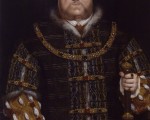
On 30th December 1546, Henry VIII signed his last will and testament, authorising changes he’d instructed William Paget to make on his behalf on 26th December 1546.
You can find a transcript of Henry VIII’s will from Letters and Papers below, but I’d highly recommend Suzannah Lipscomb’s book The King is Dead as it guides the reader through the last few months of Henry VIII’s death and argues that Henry was in control right to the end and that his will reflected his wishes and not those of the Reformists surrounding him. It is a wonderful read and also contains a transcript of the will.
[Read More...]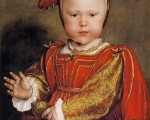
How much can you remember about the births and birthdates of the Tudor monarchs? Test your knowledge with this fun quiz.
[Read More...]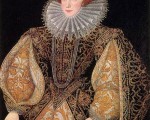
Author Adrienne Dillard, who has done extensive research on Lettice’s family, the Careys and Knollys, has written this excellent bio of Lettice. Thank you so much to Adrienne.
Per Francis Knollys’ Latin Dictionary entry,* Lettice Knollys was born in 1543 on the Tuesday present after All Hallows’ Day, or November 8, 1543, most likely at the Knollys’ family home at Rotherfield Greys in Oxfordshire. Lettice’s brilliant red hair and pale complexion may have come from her close connections to the royal family. Her mother, Catherine Carey, was Anne Boleyn’s niece and Elizabeth I’s cousin. Some historians have debated whether Catherine was the product of Mary Boleyn’s affair with King Henry VIII, but it has never been proven and rests only on circumstantial evidence. Lettice was the third child and second daughter born out of a possible sixteen, but more likely fourteen, children born to Catherine and Francis.
[Read More...]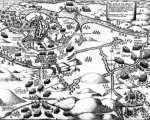
Christmas Eve, 1601. The setting: a sleepy, south-eastern port town in Ireland. The Nine Years War of Ireland had been raging since 1594, with the English fighting to have control of Ireland under Elizabeth I of England. The unorganized Irish had won several battles and skirmishes against the English, frequently through the use of ambush. But in 1601, trained Spanish troops arrived, giving great hope to the Irish.
Ireland was a Catholic country and Catholic Spain had recently suffered the humiliating defeat of their Armada by Elizabeth I in 1588. The Spanish, led by Don Juan del Áquila, arrived at Kinsale in September of 1601, with Kinsale being the poorest choice to undergo a siege, as it was situated in a hollow and did not have strong walls. The Spanish were forced to land at Kinsale due to poor weather. The English experienced some relief when they learned that the Spanish fleet was headed for Ireland and not England.
[Read More...]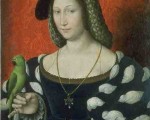
Marguerite de Navarre, also known as Marguerite d’Angoulême, was born on 11 April 1492 and died on 21 December 1549. She was sister to Francis I of France and queen consort of Henri II of Navarre. Most importantly, Marguerite was a brilliant mind and an author.
Marguerite’s early life was spent in Cognac and Blois, and was joined by her little brother, the future Francis I of France, in 1494. Sadly, Marguerite’s father, Charles d’Angoulême, passed away in 1494. Much the benefit of the precocious Marguerite, her mother was now head of the household and saw to it that her daughter received a proper education. Marguerite enjoyed learning about classical philosophy and also spent time carefully reading the Bible. This early intellectual training prepared Marguerite for deep, concerted critical thinking, which later enabled her in her literary career.
[Read More...]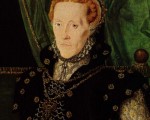
On this day in 1545, William Cecil, the future Baron Burghley, married his second wife, Mildred Cooke (1526-1589), eldest daughter of Sir Anthony Cooke, Edward VI’s tutor.
[Read More...]
On 21st December 1495, Jasper Tudor, 1st Duke of Bedford and 1st Earl of Pembroke, died at his manor at Thornbury at the age of around sixty-four. His entrails were buried at the parish church at Thornbury and the rest of his remains were laid to rest at Keynsham Abbey, according to the instructions he left in his will of 15th December.
[Read More...]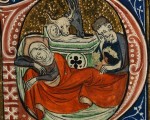
As it’s very nearly Christmas, I thought it would be fun for you to test your knowledge of Tudor Christmas traditions.
Good luck!
[Read More...]
Thank you for all our amazing members who were able to make it online to the live-chat last night with Melanie V. Taylor. We had a lively discussion about all things, including recipes(!) and of course Tudor artwork and artists.
[Read More...]
In this week’s “Claire Chats” video, Claire discusses modern-day British Christmas traditions.
[Read More...]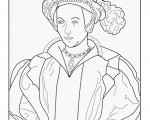
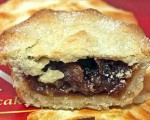
During the Tudor period the four weeks leading up to Christmas was known as Advent and consisted of fasting and a limited range of foods which were allowed to be eaten; a tradition that is still practised by some today. Christmas Eve was particularly strict and people were not allowed to eat eggs, cheese or meat. However when Christmas day came around the Tudors were allowed to cast off the food restrictions and enjoy a lavish feast!
[Read More...]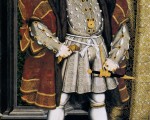
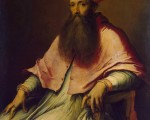

I’ve been talking about Henry VIII’s illegitimate and alleged illegitimate children in my Claire Chats videos recently so it seems appropriate to look at a woman who was the mother of the king’s only acknowledged illegitimate child, his son Henry Fitzroy, Duke of Richmond and Somerset. Over to Sarah…
Elizabeth “Bessie” Blount was the daughter of John Blount and his wife Katherine Pershall. She was born around 1498 at Kinlet Hall. Bessie’s grandmother, through her mother, had been Isabel Stanley, daughter of Sir John Stanley, a distant relative of Lord Thomas Stanley whom had married Margaret Beaufort, Henry VII’s mother. It had been Isabel’s brother Sir Humphrey Stanley whom had arranged the marriage between John Blount and his niece Katherine Pershall when the couple were only young. Sir Humphrey, while quite a rouge was also a Knight of the Body to King Henry VII.
[Read More...]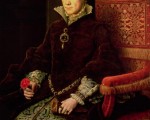
On 14th December 1558, just under a month after her death, Queen Mary I was buried at Westminster Abbey. Although Mary had left instructions in her will for her mother Catherine of Aragon’s remains to be exhumed and brought to London so that mother and daughter could be buried together, her instructions were ignored and Mary was buried by herself at Westminster on 14th December 1558 with just stones marking her resting place.
[Read More...]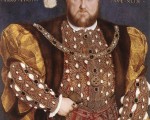
How much do you know about the treaties, alliances and agreements of the Tudor period? Test yourself with this fun quiz – good luck!
[Read More...]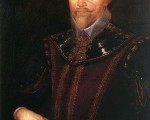
On 13th December 1577, Sir Francis Drake finally left Plymouth with his fleet of five ships on a journey which would see him circumnavigating the Globe. Storm damage to two of his ships had scuppered earlier plans.
The purpose of this journey was to sail into the Pacific and raid the Spanish colonies there. It was a secret mission authorised by Queen Elizabeth I and investors of Drake’s mission included the Queen, Sir Francis Walsingham, William and George Wynter, Christopher Hatton and John Hawkins.
[Read More...]
Tudor Christmas festivities were not complete without the Tudor equivalent of punch or sangria: the Wassail or Lambswool, a hot spiced ale or cider drink which was passed around in a communal bowl for everyone to enjoy. I thought I’d have a go at making some Lambswool Wassail, so called because the pureed apple rises to the top and creates a foamy head. I hope you enjoy my video.
[Read More...]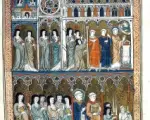
I’m excited to share news of this new online medieval history course which is now available at MedievalCourses.com and which is twenty-module course written by historian and author Toni Mount and narrated by Claire Ridgway (me!). What’s great about this course is that it is online and can be done at your own pace, so no worrying about attending classes at a certain time or missing lectures. Simply download the lectures and listen/read when it’s convenient, or listen online with streaming.
More good news is that MedievalCourses.com is offering Tudor Society members a saving off this course – scroll down to the bottom of this post for more information.
[Read More...]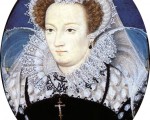
As it’s Mary, Queen of Scots’ birthday today I have added a brief biography of her to our Bios section, which already features brief bios of Henry VII, Henry VIII, Edward VI, Lady Jane Grey, Mary I and Elizabeth I.
[Read More...]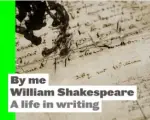
An exhibition telling the story of Shakespeare’s life in London through the paper trail left behind.
Discover the stories behind key moments in Shakespeare’s life, from the birth of the Globe theatre in London to his last days in Stratford-upon-Avon, 400 years ago.
[Read More...]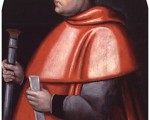
Thank you to author Sarah Bryson for this article on the Amicable Grant, a tax imposed to fund the war against France in 1525.
England had previously been at war with France in 1523 and war against the old enemy was once again proposed in early 1525. In February of that year the French troops had suffered a devastating loss against the Imperial troops of Charles V outside of Pravia. To make matters even worse for the French, their King, Francis I, had been captured in the battle and was now a prisoner of Charles V. When the messenger brought the news of Francis I’s capture to Henry VIII the King is reported to have been likened to the Archangel Gabriel, such was his happiness and excitement at hearing the news. Henry VIII, ever the opportunist, saw another chance at military glory and quickly proposed war against France. The English King believed that the idea to go to war had been blessed by God and, unlike two years previously, he had visions of reclaiming the French throne for England.
[Read More...]